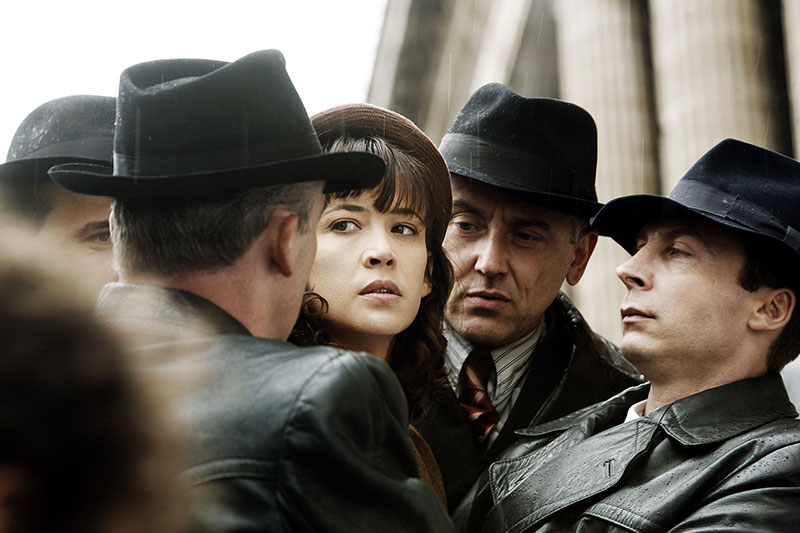THOUGHTS | DREAMS | ACTION

THOUGHTS | DREAMS | ACTION

Thoughts from a writing life…
Exploding rats and inbred pigeons

Say what you like about the British, there’s a level of madcap ingenuity that’s hard to beat, and it comes to the fore under moments of intense pressure. Like war. Like the second world war specifically, which seems to have been the last time we all (more or less) pulled (more or less) in the same direction.
Sabotage Central
This was the time of the exploding rats and the inbred pigeons. So let’s look at the rats first. Faced with a problem of an enemy who had occupied most of our allies, the blokes (sadly, it was a particularly blokey profession) in the lab coats needed to find ways to help agents of the SOE to sabotage the enemy installations. The timing pencils were an early stab in the right direction. Colour coded so that they would set off the plastic explosive in which they were embedded when the good guys were safely out of the way (timers extended from 10 minutes to 24 hours), they were notoriously inaccurate, and as liable to blow your hand off as blow up a bit of train track. So the next idea was to find something that would stop a train in other ways. These were the days of steam powered trains where a bloke with a shovel hurled coal into a furnace that kept the steam power running. So the idea was to take a rat skin and part-pack it with explosive. When said shoveller finds it in his coal pile, his instinct, as a red-blooded rat-hater, is going to be to throw the little b*****d into the furnace. The great thing about this is that he’s unlikely to survive the resulting explosion and warn his successors of the mistake. And the even better thing is that when the good guys are found with rat skins on their person, as long as they’re empty, they’re never going to raise suspicion. Everyone hates rats, right? The greatest part of this particular wheeze was that the Germans found out about it (were they told? I’m not sure) and spent inordinate amounts of time thereafter checking coal bunkers for the bodies of rats.THE ULTIMATE EXCUSE FOR A LATE TRAIN
Moving on with gusto, the idea of concealing dangerous things in undangerous looking natural objects led to tyre bursters being concealed in piles of fake horse droppings (camel droppings in North Africa) and hand-painted plaster replica horse droppings filled with more standard explosives to use as booby traps. A great amount of effort was put into creating realistic-looking lumps of coal filled with explosive that would have had much the same effect. Approximately 3.5 tonnes of fake coal was produced and, again, the fear of it, rather than necessarily the reality wreaked havoc with the timetables. (Far more plausible than ‘wrong sort of leaves on the line’ – “the engineer won’t run the train because he thinks the coal might explode”). On a different tangent, was the problem of how to give agents the right clothes. At the height of the war, sixteen agents a day were being sent overseas to drop behind enemy lines, and each one had to have clothing suited to the country from which they came, plus all their paraphernalia of communication, as secure as possible. Maps were printed on silk scarves, codes were printed on silk that could be burned away, a piece at a time, so that nobody, not even the agent, could give them up. Toothpaste tubes and shaving cream were made up with the real thing at one end and compartments for maps and ciphers at the other and, in a moment of utter ingenuity, sandals were made up for those in the far east which left either the imprint of a bare native foot or that of a Japanese military boot.Medal-winning pigeons
Little can cap the tale of the in-bred pigeons, though, for sheer ingenuity. Pigeons had been absolutely critical to the process of the first world war. They served as message carriers from the lines to HQ, and were so vital that each unit advanced with its own pigeons (and one was given the Croix de Guerre for its role in the Battle of Verdun). When hostilities recommenced in 1939, it was assumed that pigeons would be as vital and, in February of that year, a National Pigeon Service Committee was set up to ensure the continued breeding – and particularly feeding – of the national flock of homing pigeons. They came into their own when the RAF developed a pigeon section and sent out allied bomber crews with pigeons so that they could release them with details of where they had landed (crashed) when they had been shot down. It worked, too: a pigeon by the name of Royal Blue (from the royal lofts, obviously) flew 120 miles from a crash site in Holland, in just over four hours, to deliver his message and trigger a rescue operation. He and several others were awarded the Dicken medal, specifically for pigeons in war – details can be found here.What you won’t find there is the detail of the inbred pigeons. While our side was busy breeding the fastest pigeons to each other, so were the bad guys. They reputedly had specialized pigeon-breeding lofts, tended by fanatical fanciers who knew each pigeon by sight, and who ringed each one at birth to ensure that the Master Race of pigeons kept on improving. So the obvious thought then, is to contaminate the blood lines with some seriously slow stock. But how is this possible if they’re all carefully ringed? I am ashamed to say I’ve lost the reference of this, which means I can’t tell you the name of the genius who worked out how to manufacture a leg ring that replicated exactly the German ring, slipped on at birth when the bones are soft, that is supposed to be impossible to remove or replace without it being obvious that it’s been tampered with.
Anyway, said genius managed it and a serious programme extended through the war to contaminate the German pigeon blood lines with the slowest of our slow pigeons to give us the edge. It’s the kind of forward planning that assumes a war will go on for decades and any marginal edge might make the difference between winning and losing. In the event, the Bosche pigeon fanciers were not so fanatical and none ever noticed that their lofts had been contaminated. Or maybe they did, and just didn’t tell anyone. There’s a story in that for anyone with the time and patience to write it. Me, meanwhile, I’m researching the trek of the east German Trakheners horses, who nearly died out in the war, but were brought to safety in small numbers by people who cared for their survival. Now there’s a heart warming story.


